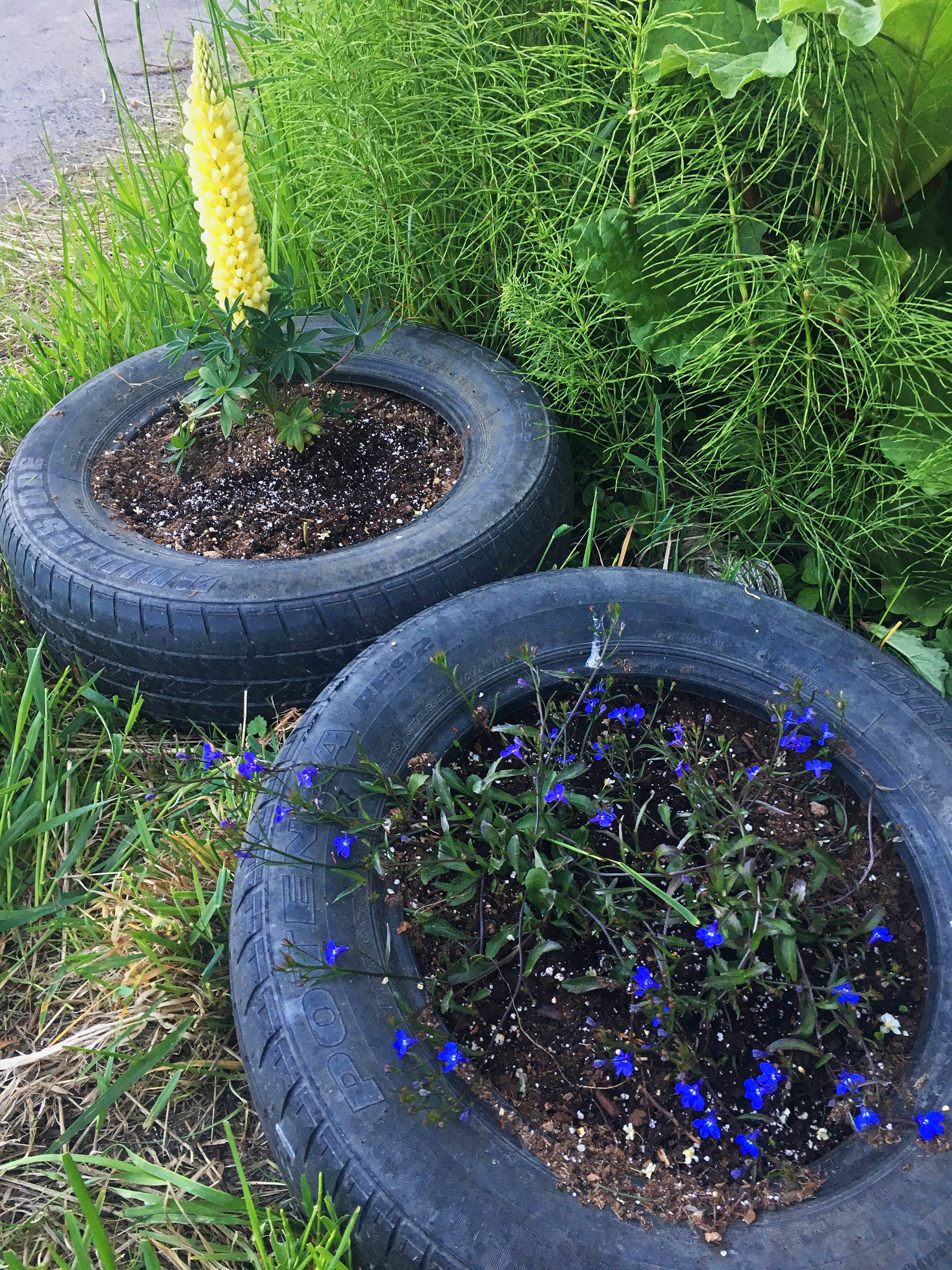This spring, I decided to get serious about gardening.
By gardening, I mean finding the most hearty, resilient plants I could and sticking them in a variety of hodgepodge troughs and decorative pots on my front porch. By serious, I mean planning to completely gut the small plot of grass in front of said porch, grab some rocks from the beach and turn it into a quaint garden, before giving up on that idea in favor of something less ambitious.
Given my track record with keeping things alive (poor to dismal) I figured perennials would be the safest way for me to go this year. I popped down to a local feed and garden store in Homer and spent the better part of two full weekends meticulously browsing the many rows and greenhouses, making notes, perfecting my choices to fit the perfect color scheme and doubling back after second guessing myself. By the end of it all, I came away with a branching, creeping bush that produces small, blue-purple blooms, a mixture of purple and orange flowers which I believe are pansies (or something else that starts with a P) and two strong, tall lupines of a color that is yet to be determined.
Come on. After an intro like that, did you really think I’d remember the proper names of all those plants by the time I got around to writing this?
Spring came early to Homer, and with it my confidence. I rehabilitated my pots and small plastic flowerbeds with what I assume is top notch soil (the bag looked pretty fancy). I arranged my patio furniture to align perfectly with all my assorted plants once they were in. I got all the plant starters (no seeds for this gal. It’s best to know one’s strengths) nice and cozy in their various homes and gave them a big helping of water.
Then it rained for about a week straight. I could tell my little wards were drenched and unhappy in their pots, but, not knowing how best to help them, decided to ride it out. Most of them pulled through and we moved on to drier, sunnier times. I managed to save two of the poppies (or did I say pansies?) from a savage attack from some small, unknown critter, that from the looks of it had tried to burrow into their home in the dirt.
All this and a few odd weeks later, everything is still technically alive, but not flourishing in the way I told myself they would this year.
I look at the lupines lining the Homer Spit this summer, as they do every summer — decorating its length with their bright splash of purple. They are an iconic Alaska plant. You can hardly find an Alaska postcard without them.
These lupines seem to have no trouble at all growing there between the sea and asphalt. They push up through the dirt and incessant wind as though they were born to do it. Not so with my own lupines. They are stouter, brighter and more boisterous — essentially made to be looked at. They grab the eye, but they do not thrive in less-than-perfect conditions like the Spit flowers.
Maybe it’s just me. I’m factoring in a large margin of user error here. I can’t control the frequent downpours that douse my plants with more water than they want or need. I sometimes neglect to notice when they’ve gone a bit more dry than they should, and I don’t mind telling you I’m less than perfect at actually following the planting directions. Root needs be dammed, I pictured my lupine in this specific pot, so in this pot it shall live!
I’m not a perfect plant mother. I wouldn’t be invited to sit on the PTA, let’s leave it at that. Still, I can’t help but wonder why my carefully bred flowers seem to wither at my less-than-perfect touch when the lupines on the Spit endure the same, if not worse, conditions throughout the season. Wind, rain, neglect, errant bicycle tires — the works. Am I really so hopeless, or will the wilder ones always win out? Is it something in their plant veins?
I know there’s more to gardening than sticking a plant in a pot and hoping for the best, and I do think I’m learning some things as I go along. When one of my flower children don’t seem to be feeling very well (leaves drooping or dry and brittle) I try moving them around the porch to benefit from different concentrations of sunlight. When a plant seems to be going a little catawampus, I always make sure to restructure the dirt around them to give a more stable base.
Sometimes, when my neighbors aren’t looking, I even talk to them a little. Just your average small talk about work and the weather — nothing extravagant. What can I say? I’ll
try anything to get this black thumb to turn a few shades lighter.

